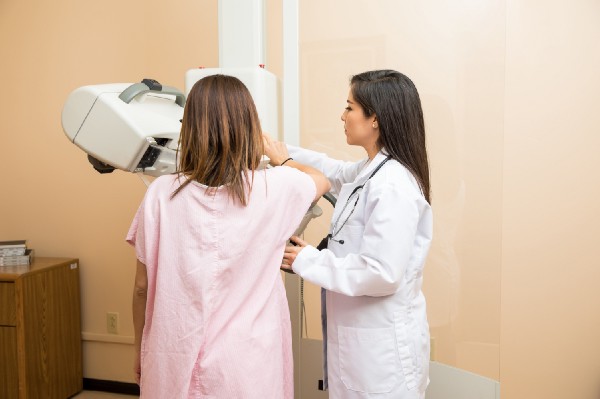According to publicly available data from multiple government- validated cancer registries, breast cancer is now the most commonly occurring cancer among women in India.
 Previously, cervical cancer was the most common cancer-type, especially among women in rural India. Instances of breast cancer were once limited mostly to urban women, however recent studies reveal that it has now taken the lead as the most common cancer in Indian women, irrespective of where they live. This change in numbers can be attributed to both lifestyle changes and an increase in the number of diagnostic facilities that can screen and detect breast cancer.
Previously, cervical cancer was the most common cancer-type, especially among women in rural India. Instances of breast cancer were once limited mostly to urban women, however recent studies reveal that it has now taken the lead as the most common cancer in Indian women, irrespective of where they live. This change in numbers can be attributed to both lifestyle changes and an increase in the number of diagnostic facilities that can screen and detect breast cancer.
Specialists agree that the best way to prevent breast cancer deaths, is early detection followed by treatment as per the latest scientific protocols. Usually, early-diagnosed cases are the easiest to treat, because it involves smaller tumors, and the cancer hasn’t spread to other organs yet. The recommended process for detecting breast cancer early, is to screen for lumps on a regular basis.
What is Cancer Screening?
Cancer screening aims to detect cancer before symptoms appear. This involves imaging scans and pathological tests such as blood tests, urine tests, and more. Such screening can help in detecting cancer when the tumors are small and localized, leading to better results. This also helps doctors treat patients with minimal side effects and complications, and the
treatment journey is much easier compared to a late diagnosis.
The size and extent of tumors are the most important factors in determining the overall prognosis for a woman with this disease. Breast cancers detected by mammography are expected to be confined to the breasts, and this enables minimally invasive surgery options (such as breast conserving lump removal), and helps doctors avoid removing the breasts completely.
What is Mammography?
Mammography (or Mammogram) is an X-ray image of the breasts. When we check for Breast Cancer in seemingly normal women without any signs or symptoms, the process is called a screening mammogram. X-ray pictures are taken in two or more dimensions, to look for any visibly abnormal lumps. Screening mammograms help us in detecting tumours that might be overlooked during physical examinations.
A Diagnostic Mammogram is performed when doctors notice any signs of possible breast lumps. Such symptoms may include a lump, or swelling/pain in the breasts, thickening of the skin on the breasts, fluid or bloody discharge from the breasts, or a change in the size or shape of one or both breasts. However, it is important to note that these symptoms do not confirm the presence of cancer, and further analysis is essential for confirmation.
Who Needs Breast Cancer Screening?
The American Cancer Society Guidelines have defined two categories for breast cancer screening, according to the risk of occurrence: Average-Risk, and High-Risk.
A woman with no history of breast cancer (either personally or in the family), no detected genetic mutations (such as BRCA, which could increase the risk of breast cancer) and no exposure to chest radiation therapy before the age of 30, is considered to be at average risk.
The guidelines provide the following recommendations for women at average risk, based on their age:
- Women aged between 45–54 years should get an annual mammogram.
- Women aged 55 and more, should get mammograms every alternate year (alternatively, they can continue with annual mammograms).
Such screening should continue as long as a woman is in good health, with an expected life expectancy of 10 years or more. Mammography has not seen significant benefits for women beyond the age of 75.
Please note that mammograms are not failsafe (just like other medical tests), and tumors might escape detection during such scans, necessitating further tests. All reports, therefore, should be discussed with your consulting doctor/general physician.
Clinical Breast Exams & Self-Examination
Researchers are yet to find clear diagnostic benefits of physical breast examinations (performed by doctors or women themselves). Hence, the guidelines do not recommend relying only on regular physical examinations for the purpose of cancer screening. Still, all women should observe if there is a sudden change in the shape or consistency of their breasts, and consult a doctor immediately if such changes are spotted.
The American Cancer Society identifies the following categories of women as high-risk candidates for breast cancer:
Women with a 20–25% or greater lifetime risk of Breast Cancer, as defined by various risk assessment tools
- Women with positive BRCA-1 or BRCA-2 mutation
- Women with a first-degree relative (parent, brother, sister, or child) with confirmed BRCA-1 or BRCA-2 gene mutation, who haven’t undergone genetic testing
- Women who’ve had radiation-treatment exposure to the chest between the ages of 10 and 30
- Women who have displayed any known cancer-syndromes.
It is recommended that such women opt for an MRI and a mammogram every year.
Notably, MRI scans cannot replace mammograms for breast cancer screening purposes, since MRIs may still miss some cancers which can be detected by Mammography. Women should begin screening with MRIs and mammograms in their forties (40-49 years depending on their risk factors), and this should continue for as long as they are in good health, based on personal preferences, and discussions with their doctors.
Mammography has several advantages, and if detected early, breast cancer can be treated more efficiently.



